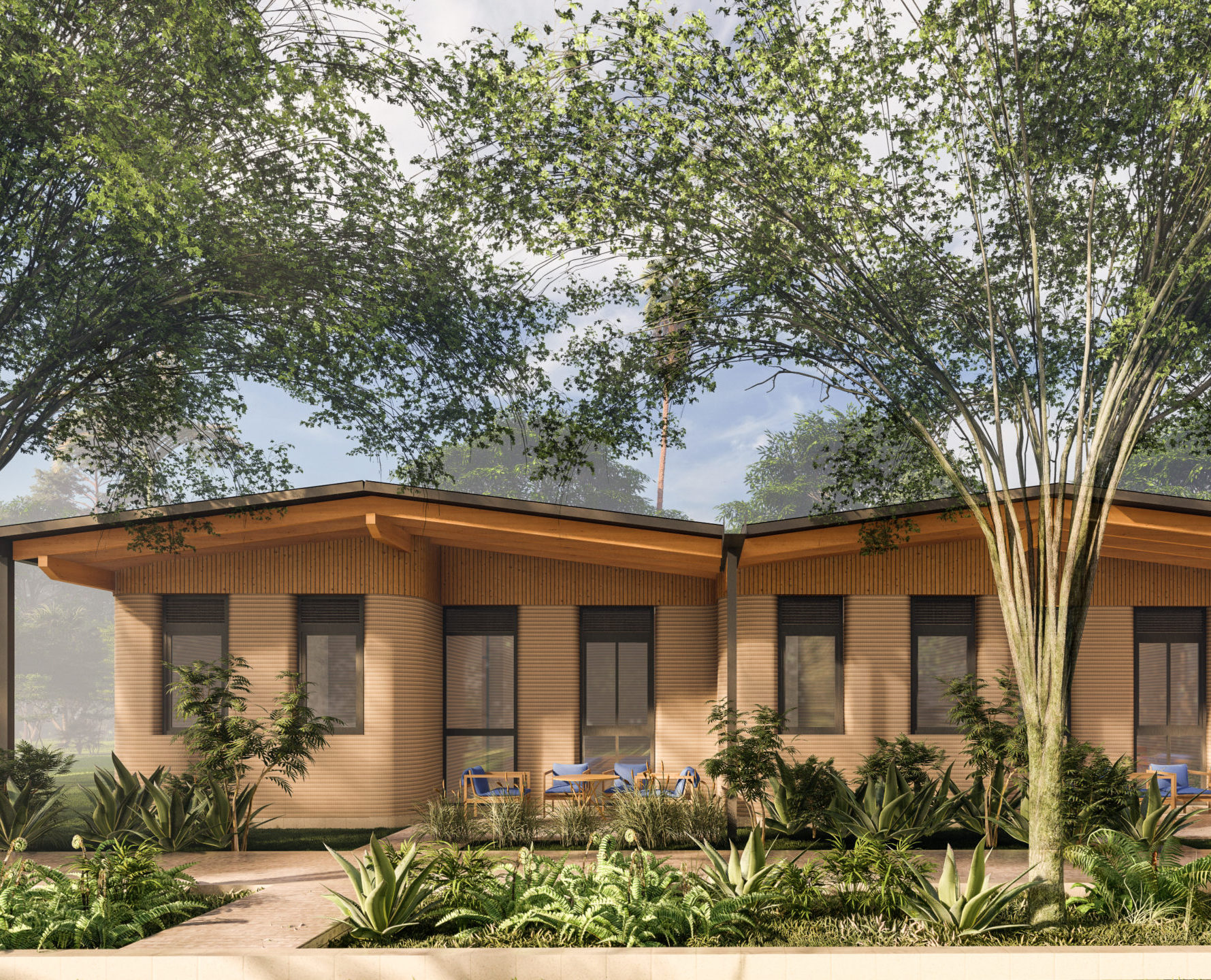Swiss cement giant Holcim has announced that it will be launching the largest 3D printed house project in Africa with a 52-building housing complex in Kenya. Dubbed Mvule Gardens, the initiative will be pursued executed by 14Trees, a joint venture between Holcim and the UK’s development finance institution, the CDC Group.
Located in Kilifi, Kenya, Mvule Gardens is a part of the Green Heart of Kenya regenerative ecosystem and won IFC-EDGE Advanced sustainable design certification, for resource efficient and zero-carbon buildings. 14Trees is aimed at creating skilled local jobs while also addressing Africa’s affordable housing shortage. The U.S.- and Africa-based architecture firm MASS Design Group conceived of the Mvule Gardens design, with the idea of making homes that fit Kenya’s environment.
Holcim’s TectorPrint “ink”, designed for additive construction, is meant to print walls with the necessary structural integrity. Based on its project 3D printing a school in Malawi, Holcim claims that additive construction can cut the environmental footprint of a house by over 50 percent compared to traditional techniques. The walls can also be made in just 12 hours, which contrasts with the four days required with conventional methods.
Jan Jenisch, CEO Holcim: “We are excited to be building one of the world’s largest 3D-printed affordable housing projects in Kenya. With today’s rapid urbanization, over three billion people are expected to need affordable housing by 2030. This issue is most acute in Africa, with countries like Kenya already facing an estimated shortage of two million houses. By deploying 3D printing, we can address this infrastructure gap at scale to increase living standards for all.”
There are three home types in development, ranging from one-bedroom, 42-square-meter houses with a price of 2,436,000 Kenyan Shillings (~USD$21,600) to three-bedroom, 76-square-meter houses with a price of 4,484,000 KES (~USD$40,000).

The two-bedroom version of 14Trees’ 3D printed home. Image courtesy of 14Trees.
However, despite its purported goals of sustainability through 3D printing, Holcim has a carbon footprint about the size of Venezuela. This is due to the fact that cement production releases significant carbon dioxide, representing eight percent of global CO2 emissions. The company may be attempting to make progress in the right direction, but it may be that its additive construction projects represent more of an attempt at greenwashing than anything else. After all, concrete is the foundation of its business and, like an oil company that derives its profits from fossil fuels, there’s no financial incentive for it to eliminate its primary business.
The International Finance Corporation (IFC) that awarded Mvule Gardens an EDGE Advanced sustainable design certification for buildings that haven’t been constructed yet may not be that meaningful either. The World Bank’s IFC has been involved in REDD+ carbon trading schemes, which activists warn allows for companies and governments to protect or grow forests in one part of the world only to emit CO2 and cause environmental destruction elsewhere in ways that have a net negative impact on the planet.
The story comes just days after news that the company would cooperate in an investigation into the possible role of Holcim’s Syrian subsidiary, La Farge SA, in complicity in crimes against humanity by paying armed groups like the Islamic State to protect its staff in the region. This came soon after news that a worker was killed and five more were injured at Marwar cement plant in India, owned by Holcim subsidiary Ambuja cement. 14Trees’ CDC Group also may not have the proper human rights cred, as it invested in the Feronia Inc’s oil palm plantations in the Democratic Republic of Congo, which was accused of human rights violations against local villagers. 3D printed buildings and other structures have the benefit of attracting a great deal of media attention that could play a role in drowning out any controversies that may be playing out.
Subscribe to Our Email Newsletter
Stay up-to-date on all the latest news from the 3D printing industry and receive information and offers from third party vendors.
Print Services
Upload your 3D Models and get them printed quickly and efficiently.
You May Also Like
Reinventing Reindustrialization: Why NAVWAR Project Manager Spencer Koroly Invented a Made-in-America 3D Printer
It has become virtually impossible to regularly follow additive manufacturing (AM) industry news and not stumble across the term “defense industrial base” (DIB), a concept encompassing all the many diverse...
Inside The Barnes Global Advisors’ Vision for a Stronger AM Ecosystem
As additive manufacturing (AM) continues to revolutionize the industrial landscape, Pittsburgh-based consultancy The Barnes Global Advisors (TBGA) is helping shape what that future looks like. As the largest independent AM...
Ruggedized: How USMC Innovation Officer Matt Pine Navigates 3D Printing in the Military
Disclaimer: Matt Pine’s views are not the views of the Department of Defense nor the U.S. Marine Corps Throughout this decade thus far, the military’s adoption of additive manufacturing (AM)...
U.S. Congress Calls Out 3D Printing in Proposal for Commercial Reserve Manufacturing Network
Last week, the U.S. House of Representatives’ Appropriations Committee moved the FY 2026 defense bill forward to the House floor. Included in the legislation is a $131 million proposal for...

































